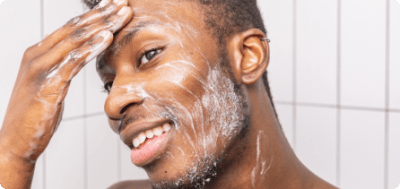
Myristol Hexapeptide
A synthetic, fatty acid-linked peptide known to improve the skin's resilience, visibly calm, and help the skin look and feel smoother and softer. Myristoyl hexapeptide-16 is categorized as a protein-stimulating peptide, which means it can help skin's surface look better and become more resistant to moisture loss. It is in a class of ingredients also found on ingredients lists as acetyl hexapeptide, acetyl tetrapeptide, acetylarginyltryptophyl diphenylglycine, arginine/lysine polypeptide, azelaoyl bis-dipeptide, myristol hexapeptide, dipeptide, dipeptide diaminobutyroyl benzylamide diacetate, ferric hexapeptide, palmitate, myristol hexapeptide, myristol pentapeptide, myristoyl nonapeptide, myristoyl pentapeptide, oligopeptide, palmitoyl tripeptide, palmitoyl decapeptide, palmitoyl heptapeptide, palmitoyl hexapeptide, palmitoyl nonapeptide, palmitoyl oligopeptide, palmitoyl pentapeptide, palmitoyl tetrapeptide, palmitoyl tripeptide, palmitoyl tetrapeptide, pentapeptide, sh-oligopeptide, tetrapeptide and copper palmitoyl heptapeptide.
What is Myristol Hexapeptide?
Many peptides function as anti-ageing ingredients in skincare, due to their ability to fit specific receptors in the body to trigger anti-ageing responses. This includes mechanisms like collagen production, cell regeneration or even blocking muscle contractions to smooth expression lines.
What does Myristol Hexapeptide do?
Used in skincare to treat fine lines, wrinkles and improve the skin's elasticity.
Who is Myristol Hexapeptide good for?
If any of the following apply Myristol Hexapeptide might be a good option for you:




Who should avoid Myristol Hexapeptide?
If any of the following apply it might be best to avoid Myristol Hexapeptide:



Complete our quick quiz, then upload photos or book a video call (priced at £20 or £35)


Our award-winning AI analyses your skin before your aesthetician creates your personalised routine


Message your aesthetician with any questions and check-in as your skin changes for ongoing advice

